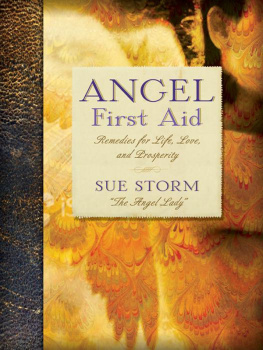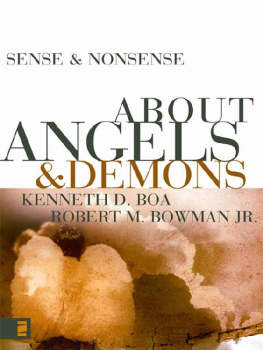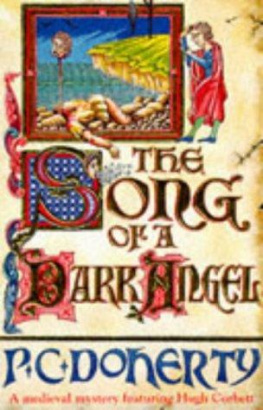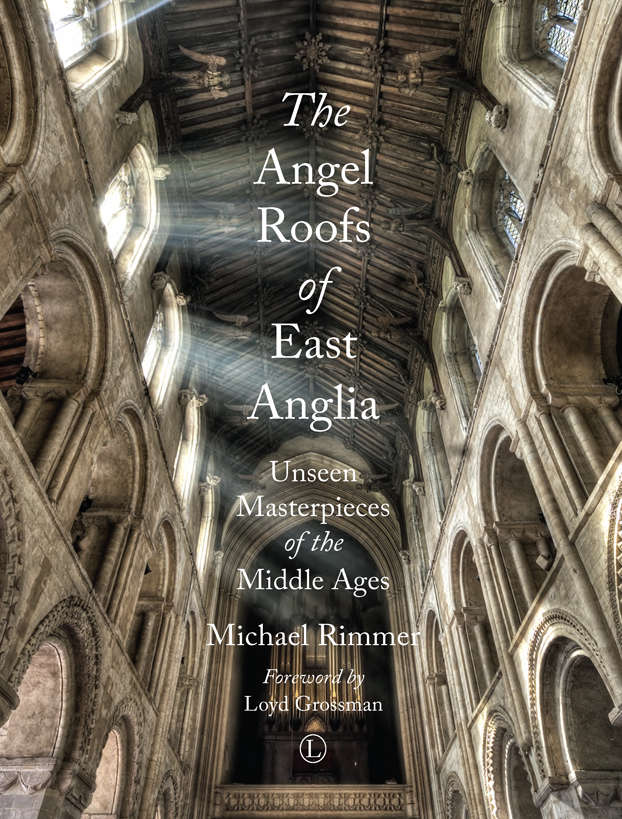The Angel Roofs of East Anglia
The angel roof at Wymondham Abbey, Wymondham, Norfolk.
The Angel Roofs of East Anglia
Unseen Masterpieces
of the Middle Ages
Michael Rimmer

The Lutterworth Press
The Lutterworth Press
P.O. Box 60
Cambridge
CB1 2NT
United Kingdom
www.lutterworth.com
publishing@lutterworth.com
ISBN: 978 0 7188 4318 2
British Library Cataloguing in Publication Data
A record is available from the British Library
Copyright Michael Rimmer, 2015
First Published, 2015
The maps in this book were created using
the myPhotoMap app (www.mytracks4mac.com)
and Open Street Map (www.openstreetmap.com).
All rights reserved. No part of this edition may be reproduced, stored
electronically or in any retrieval system, or transmitted in any form or by
any means, electronic, mechanical, photocopying, recording,
or otherwise, without prior written permission from the
Publisher (permissions@lutterworth.com).
For Beata, John and Geraldine
and for the soul of the Methwold Master
Nowhere outside England can be found such a series of magnificent timber roofs as those of which Westminster Hall, Hampton Court and the angel roofs of East Anglia are examples.
L.F. Salzman
Building in England (1952)
The East Anglian group includes very many fine roofs, in which the length of the wall posts and the common use of the hammer-beam are the most striking features. The timbers are generally very light, and the curves of the braces are wrought with much refinement and sense of proportion. The construction is more daring, the effect lighter and more graceful, than in any other part of the country, and the architectural details of traceried and foliaged spandrels, moulded timbers, and battlemented or crested cornices are usually far more elegant. Moreover, a lovely effect is produced in very many roofs by poising carved angels with widespread wings on every point of vantage.
F.E. Howard and F.H. Crossley
English Church Woodwork (1917)
If you envision the forces of gravity and weather acting on one of the trusses, the whole elaborate structure comes to life. Force rolls down the great composite rafters. More force flows straight down from the roof peak into the king post, which in turn distributes its forces to the queen posts and they to the collar beam. Force flows off the building into the ground through the top of the wall and through wall posts and corbels.
William Bryant Logan
Oak: the Frame of Civilization (2005)

THE CHURCHES
CONSERVATION TRUST
The national charity protecting historic churches at risk.
The Churches Conservation Trust has saved over 345 beautiful buildings
which attract almost 2 million visitors a year.
Its unique collection of historic churches is the largest in the country, featuring treasures
ranging from virtually untouched medieval gems in idyllic rural settings to ornately
impressive Victorian masterpieces in busy urban centres. All are of international
importance and include irreplaceable examples of architecture,
archaeology and art from 1,000 years of history.
All royalties from the sale of this book will be donated to
The Churches Conservation Trust in support of its work.
Contents
Unless otherwise stated, the photographer and copyright holder of all
images listed below is the author, Michael Rimmer.
Paired angels on the central beam of the cambered roof at Holy Trinity, Blythburgh, Suffolk.
B EFORE ANY VISIT TO a historic church, habit leads me to start with Pevsner, whose deadpan description of the roof of St Nicholas, Kings Lynn, reads, The roof has tie-beams on shallow arched braces with traceried spandrels. Above the tie-beams tracery and arched queenposts, also with tracery each alternating truss has angels as hammerbeams. There is little there to indicate that St Nicholas angel roof is a miracle of English carpentry, one of many such to be found throughout East Anglia where the genre flourished from the late 1390s until the 1530s, at which point the artistically deadening hand of Reformation began to sweep away religious imagery. Amidst the turbulent iconoclasm of the Reformation years, when so much ecclesiastical art and decoration was defaced and destroyed, most angel roofs survived, protected by their inaccessibility. Of the almost 170 surviving angel roofs in England and Wales, roughly 70 per cent can be found in Norfolk, Suffolk and Cambridgeshire. The same inaccessibility that protected these roofs has also made them hard to appreciate without the aid of binoculars and the resulting consequence of a stiff neck. This book is of great importance because Michael Rimmer, a keen photographer and connoisseur of angel roofs, has succeeded in documenting virtually every surviving medieval angel roof in East Anglia. Thanks to scaffolding in churches under restoration, I have been privileged enough to get up close to an angel roof a few times. Now thanks to Michaels photographs, that experience is available to many for whom these photographs will be a revelation, showing the complex mix of carpentry, engineering, artistry and faith that make these roofs so thrilling to contemplate.
I have the honour of being Chairman of The Churches Conservation Trust; St Nicholas, Kings Lynn, with its angel roof, is among the nearly 350 churches we care for. I believe they all have the power to galvanize communities and inspire and delight individuals. With a generosity to match his talent, Michael has kindly decided to donate his royalties from this book to The Churches Conservation Trust and all lovers of the English parish church should be grateful to him.
Loyd Grossman
Chairman of The Churches Conservation Trust
The cadaver tomb of John Baret, the donor of the angel roof
at St Mary, Bury St Edmunds, Suffolk.
I WOULD LIKE TO THANK all those who have provided help, advice and encouragement in my study of angel roofs, particularly Professor John Onians, Professor Sandy Heslop, Dr Margit Thofner, Dr Claire Daunton and Mr Michael Begley. All errors are entirely my own.
My thanks also to Liz Truss MP, Steve Stockwell and Lt Col E. Lloyd-Jukes for enabling me to photograph the angel roof at Westminster Hall.
I am grateful to all those churches that offer open visitor access, and to the key holders who have taken the time and trouble to let me in to those that are usually locked.
Finally, I would like to acknowledge the unstinting hard work, expertise and support of my editors at The Lutterworth Press, Lisa Sinclair and Bethany Churchard. It has been a pleasure to work with them.

















